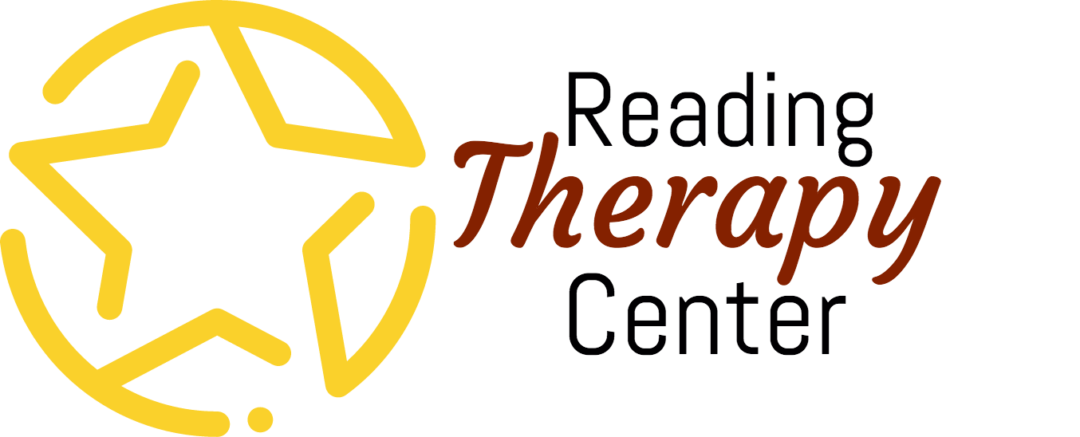Frequently Asked Questions
-
Dyslexia is a broad term that refers to reading difficulty and affects 20% of the population, or 1 in 5 students. A child can have an average or above-average intelligence but still struggle to read, as the child is unable to break words into sounds and/or syllables. The primary reason for reading and spelling difficulties is weak phonological awareness. Children with weak phonological awareness will often add, omit, or substitute sounds when reading, as well as guessing when they see a word they don’t know. This difficulty often presents itself in early elementary and remains persistent throughout life unless it is properly addressed with the appropriate instruction. A tutoring approach such as re-teaching, consistent re-reading, etc. is not an effective way to improve a phonemic awareness weakness.
The Lindamood Phoneme Sequencing® and the Seeing Stars® programs are the two sensory cognitive therapies that the staff utilize at the Reading Therapy Center. These programs are done intensively by a well-trained and experience instructor and are extremely effective in fixing this difficulty. This therapy process is integrated into every level or reading and spelling from simple syllables to multi-syllables. It is then brought into word identification and contextual reading. Our goal is to teach students to become independent, self-correcting readers.
-
Many students with poor comprehension skills are often undiagnosed by the school, since the student may read and spell with no difficulty. As a student progresses through school, a comprehension difficulty can cause significant gaps in information. Students may struggle to express themselves either in writing or speaking. This can cause difficulty with relationships as understanding conservations, following directions, or explaining an event may be difficult.
Since lack of imagery is one of the major underlying causes of comprehension weakness, this must be effectively improved. RTC utilizes the Visualization/Verbalization® program to train students how to make mental images and retain information. The program’s approach is sequential—beginning with simple, short, concrete material, and moving to more complex, lengthy and abstract material. As a student’s ability to image improves, the student’s comprehension improves.
In order to help an individual apply these skills to their curriculum areas, Discover Meaning© is utilized. This program teaches how to use mental picturing for recall in order to answer questions accurately and give written or verbal summaries of what they have learned. It also provides guidance on how to take notes, understand questions, think about information more deeply in order to make inferences, predictions and conclusions about it, organize information and materials, study for tests, and become an independent, confident learner.
Comprehension weakness requires further focus on the areas of vocabulary, categories, opposites, and idioms. Once these language areas are improved, a student can improve their ability to image, sequence, and summarize material. This allows the student to succeed when summarizing what was read.
Grammar usage and sentence writing knowledge is also incorporated using our Sentence Pattern© program when necessary. This approach starts with simple sentences, identifying and correcting fragments, and then moves into creating more compound and complex sentences by using conjunctions. Knowledge of these conjunctions strengthens the person’s ability to understand and communicate the relationship between the information they have learned. Once sentence construction is improved, these skills are applied to paragraph and essay writing.
-
Intensive training and experience in using the On Cloud Nine® and Discover Math® programs have led to a comprehensive approach to math remediation at Reading Therapy Center. The program is thorough and sequential, filling in gaps of knowledge a student may have. The following are covered areas: numeration, operations, measurement, time, money, fractions, as well as higher level math difficulties through the seventh grade, such as early algebraic equations, fractions, decimals, and percentages. Students use language, concrete manipulatives, and mental imagery to understand math concepts. New concepts are introduced, while older concepts are reviewed daily until they become internalized. Students learn how to think and talk about numbers, relate math concepts to one another, and develop a solid understanding of our mathematical system.
If my child comes for therapy, what would their schedule be like?
We see most students one-on-one for 1-2 hours per day, 3-5 days per week. If a student is in Kindergarten or first grade, we may see them daily for one hour. Therapy sessions are generally scheduled during the school day. If a student travels from a greater distance, we may see them for up to 4 hours per day. In all instances, our sessions are consistent and intensive because it is the most effective way to change the problem.
The length of instruction depends on the severity of a student’s underlying difficulties. Some children have only one area of difficulty while others have multiple areas. After the initial evaluation, we will explain our recommendations for a therapy plan, including an estimation of the minimum amount of hours needed. At times this may be 6 months of instruction, other times we may be involved in a child’s education for a year or longer.
How do you include and inform parents while their child is at the Reading Therapy Center?
We strongly encourage parents to be a part of their child’s experience at RTC. This may mean observing your child during sessions, communicating with their teacher(s), and being involved in progress updates. In this way, we can explain the therapy techniques we are using and answer any questions you may have. It also allows an opportunity for parents to see the types of things their child is doing, as they are able to “show off” their newly-learned skills to you.
What’s the best way to reach out to the RTC?
When traditional approaches in the classroom and/or special education have not been enough, students are in need of more specialized, intensive treatment. The process begins with an evaluation from which we can determine if therapy is needed. The sooner a child begins to receive treatment the greater the gains.
Don’t hesitate to call or email with questions. We are here to help.
